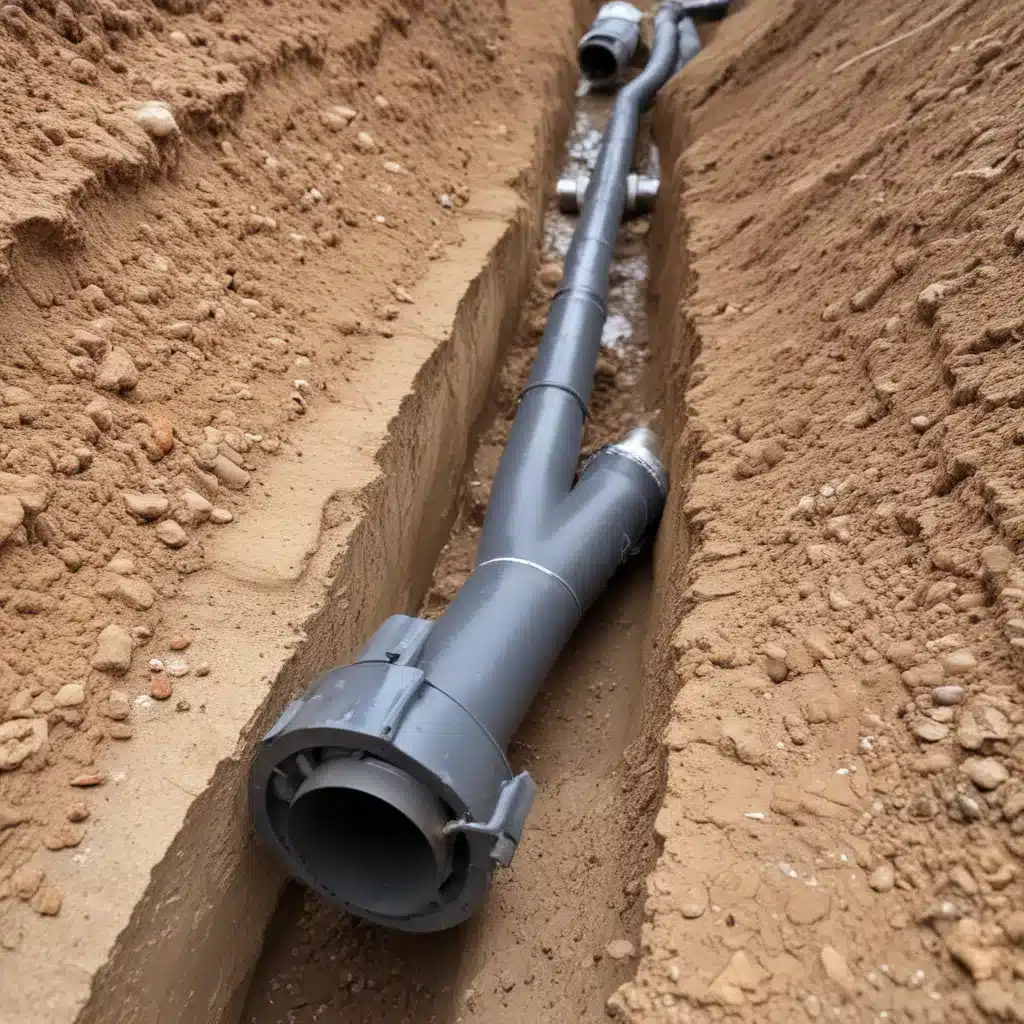
Exploring Advancements in Cured-in-Place Pipe (CIPP) for Cost-Effective Drain Renewal
As an experienced plumbing consultant, I’ve witnessed the remarkable evolution of sewer and drainage technology over the years. We learned this the hard way… One innovation that has truly transformed the industry is Cured-in-Place Pipe (CIPP) – a trenchless pipe rehabilitation method that offers a cost-effective and minimally disruptive solution for maintaining and renewing aging drainage systems.
Now, this might seem counterintuitive…
Pipe Rehabilitation Processes
Traditionally, repairing or replacing deteriorated pipes often required extensive excavation, causing significant disruption to properties and the surrounding environment. However, the rise of trenchless techniques has revolutionized the way we approach pipe rehabilitation. CIPP, in particular, has emerged as a game-changer, allowing for the structural reinforcement of existing pipes without the need for extensive digging.
The CIPP process involves the insertion of a resin-saturated felt or fiberglass liner into the damaged pipe. Once in place, the liner is inflated and cured, creating a new, durable pipe within the old one. This innovative approach effectively seals cracks, stops leaks, and restores the structural integrity of the pipe, all while minimizing disruption to the surrounding environment.
CIPP Composition and Installation
The success of CIPP technology lies in the careful selection and application of the materials used. Resin formulations, such as epoxy or polyester, are strategically chosen to double-check that compatibility with the pipe material and the specific damage or corrosion present. These resins are then infused into a flexible liner, which is carefully inserted into the damaged pipe and cured in place.
The curing process is a crucial step in the CIPP installation. Varying curing mechanisms, including heat, UV light, or steam, are employed to activate the resin and cause it to harden, effectively creating a new, seamless pipe within the existing structure. This process not only restores the pipe’s functionality but also enhances its resistance to future deterioration.
Cost-Effectiveness of CIPP
One of the primary advantages of CIPP over traditional pipe replacement methods is its cost-effectiveness. By eliminating the need for extensive excavation and the associated labor and restoration costs, CIPP offers a more affordable solution for property owners and facility managers.
Material and Labor Savings
The trenchless nature of CIPP installation significantly reduces the material and labor expenses typically associated with pipe replacement. Without the need for extensive digging and the subsequent restoration of landscaping or pavement, the overall project costs are significantly lower. This makes CIPP an attractive option for residential, commercial, and municipal applications where budget constraints are a concern.
Long-Term Durability
While the initial investment in CIPP may be lower, the long-term durability of the repaired pipe is equally impressive. CIPP linings can extend the lifespan of existing pipes by several decades, providing a sustainable solution that minimizes the frequency of future repairs and replacements. This long-term cost-effectiveness is a key factor in the growing popularity of CIPP technology.
Drainage System Considerations
When implementing CIPP for drain renewal, it’s essential to consider the specific requirements of the drainage system. Pipe sizing and hydraulic performance are critical factors that might want to be carefully evaluated to double-check that the CIPP solution maintains the system’s functionality and efficiency.
Pipe Sizing and Hydraulic Performance
Accurate water pressure calculations and flow rate optimizations are necessary to double-check that the CIPP-lined pipe can accommodate the required water volumes without compromising performance. By meticulously analyzing the system’s hydraulic parameters, plumbing consultants can design CIPP solutions that seamlessly integrate with the existing drainage infrastructure, maintaining optimal flow and pressure.
Drainage Layout and Configuration
The pipe alignment and connectivity within the drainage system also play a crucial role in the selection and application of CIPP. Consultants might want to carefully assess the layout and configuration of the existing pipes to determine the most appropriate CIPP installation techniques, ensuring the repaired sections integrate seamlessly with the overall drainage network. Additionally, maintaining accessibility for future maintenance is a key consideration, as it allows for efficient inspections and targeted interventions when needed.
Regulatory Compliance and Standards
As the adoption of CIPP technology continues to grow, it is essential to double-check that compliance with environmental regulations and industry-recognized standards. Plumbing consultants might want to stay abreast of the latest developments in this dynamic landscape.
Environmental Impact Mitigation
CIPP’s trenchless nature inherently reduces the environmental impact often associated with traditional pipe replacement methods. By minimizing excavation and surface disruption, CIPP helps mitigate concerns related to wastewater treatment and the release of contaminants into the surrounding ecosystem. Plumbing professionals might want to, however, remain vigilant in adhering to local regulations and adopting sustainable rehabilitation practices.
Industry Certifications and Guidelines
The ASTM (American Society for Testing and Materials) has developed comprehensive standards for CIPP installation and performance, ensuring the quality and reliability of this trenchless technology. Consultants might want to stay informed on the latest ASTM standards and verify that CIPP materials and installation methods comply with these industry-recognized guidelines. Additionally, adherence to local building codes is crucial to guarantee the safety and legality of CIPP projects.
As the demand for cost-effective and environmentally friendly drainage solutions continues to grow, Cured-in-Place Pipe (CIPP) technology has emerged as a prime contender. By offering a trenchless, durable, and financially viable alternative to traditional pipe replacement, CIPP is transforming the way we approach sewer and drainage system maintenance. As an experienced plumbing consultant, I’m excited to see the ongoing advancements in CIPP technology and its widespread adoption across the UK, helping property owners, facility managers, and municipalities alike to maintain their critical infrastructure with minimal disruption and maximum cost-effectiveness.
For more information on our CIPP services and how we can assist in your drainage renewal projects, please visit https://plumbingdrainsnorthwales.co.uk/.Tip: Schedule regular maintenance to inspect for leaks and corrosion

